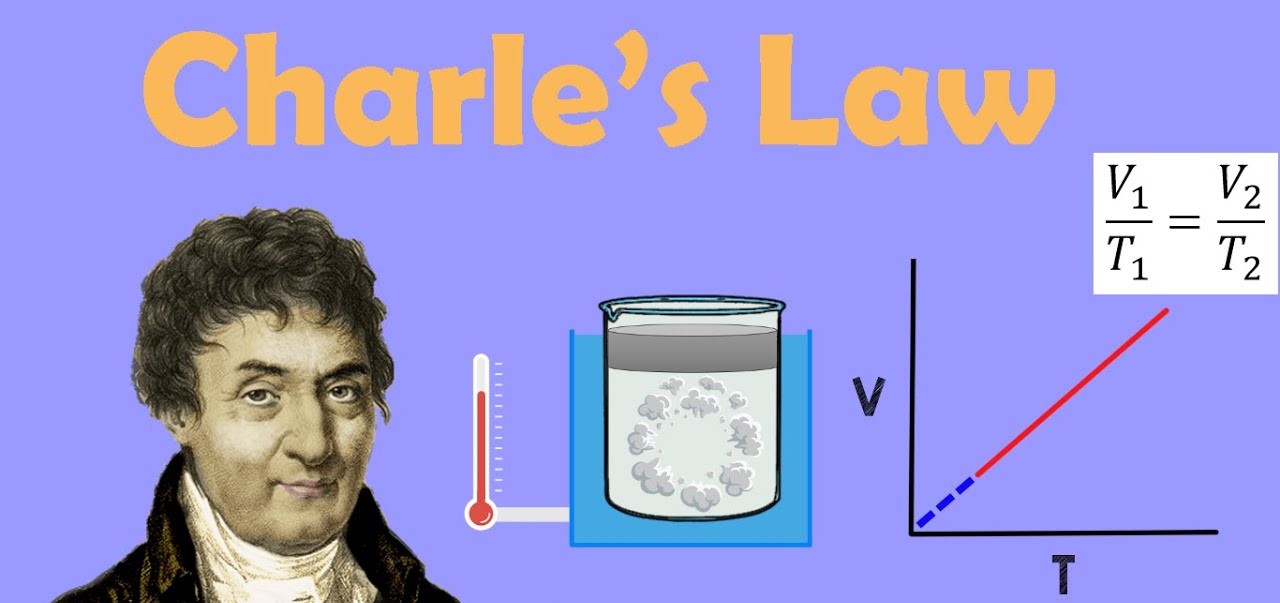
When it comes to the fascinating world of physics, one of the fundamental laws that governs the behavior of gases is Charles’s Law. Named after the renowned French physicist Jacques Charles, this law explores the relationship between the temperature and volume of a gas when pressure is held constant. Charles’s Law states that as the temperature of a gas increases, its volume also increases, and vice versa, as long as the pressure remains constant.
In this article, we will delve into 19 captivating facts about Charles’s Law, shedding light on its origins, applications, and implications in the world of physics. Whether you are a science enthusiast, a student studying physics, or simply curious about the laws that govern our universe, these facts will provide you with a deeper understanding and appreciation of Charles’s Law.
Key Takeaways:
- Charles’s Law explains how gases behave when they get hotter or colder. It’s like a rulebook for gas behavior, helping scientists and engineers in industries like automotive and scuba diving.
- By understanding Charles’s Law, we can predict how gases will react in different situations, from inflating airbags to preserving food. It’s like having a superpower for controlling gases!
Charles’s Law describes the relationship between temperature and the volume of a gas.
Charles’s Law states that the volume of a gas is directly proportional to its temperature, assuming pressure and quantity are held constant.
It is named after Jacques Charles, a French scientist.
Jacques Charles, also known as Charles de Villette, first described the relationship between temperature and volume in the late 18th century.
Charles’s Law is a fundamental principle of thermodynamics.
It is one of the gas laws, which are fundamental concepts in the study of thermodynamics and the behavior of gases.
The equation for Charles’s Law is V1/T1 = V2/T2.
This equation represents the initial and final states of the gas, where V1 and T1 are the initial volume and temperature, and V2 and T2 are the final volume and temperature.
Charles’s Law applies to ideal gases.
While gases in the real world may not perfectly follow Charles’s Law, it is a useful approximation for ideal gases under normal conditions.
Charles’s Law can be derived from the combined gas law.
The combined gas law combines Charles’s Law with Boyle’s Law and Gay-Lussac’s Law to describe the relationship between temperature, volume, and pressure of a gas.
Charles’s Law is based on the concept of a constant pressure system.
As long as the pressure remains constant, Charles’s Law holds true and allows us to predict the behavior of gases as temperature changes.
Charles’s Law is an idealization of real-world gas behavior.
In reality, gases may deviate from ideal behavior at high pressures or low temperatures, but Charles’s Law still provides a useful approximation under many conditions.
Charles’s Law is often used in the automotive industry.
Understanding the relationship between temperature and volume is crucial in the design and operation of engines, as well as in the study of air conditioning systems.
Charles’s Law can be seen in action with a balloon.
If you heat up a balloon, the air inside expands, causing an increase in volume, demonstrating the principles of Charles’s Law.
Charles’s Law is integral to the study of weather phenomena.
The relationship between temperature and volume of the atmosphere plays a significant role in understanding weather patterns and atmospheric pressure.
Charles’s Law can be expressed in terms of Kelvin or Celsius.
While the Kelvin scale is often used in scientific calculations, Charles’s Law can also be expressed using the Celsius scale by converting temperatures to Kelvin.
Charles’s Law is a result of the kinetic theory of gases.
The kinetic theory explains gas behavior in terms of the motion of gas molecules and their interactions, providing a foundation for understanding Charles’s Law.
Charles’s Law is a direct consequence of Boyle’s Law.
Boyle’s Law states that the pressure and volume of a gas are inversely proportional, and when combined with Charles’s Law, it gives rise to the ideal gas law.
Charles’s Law has applications in the field of scuba diving.
Understanding how pressure and volume change with temperature is crucial to ensuring the safety and functionality of scuba diving equipment.
Charles’s Law can be used to predict the behavior of gases in airbags.
The relationship between temperature and volume is essential in understanding how airbags inflate and protect passengers during a collision.
Charles’s Law is encapsulated by the phrase “As temperature increases, so does the volume.”
This succinct statement summarizes the essence of Charles’s Law and its impact on the behavior of gases.
Charles’s Law provides a basis for calculating absolute zero.
By extrapolating the volume-temperature relationship, scientists can determine the temperature at which gas particles theoretically stop moving, known as absolute zero.
Charles’s Law is applied in various industries, including aerospace, chemistry, and food processing.
Understanding the relationship between temperature and volume is vital in these fields for applications such as rocket propulsion, chemical reactions, and food preservation.
Conclusion
Charles’s Law is a fascinating concept in the field of physics that explores the relationship between temperature and volume. Through this law, we have gained a deeper understanding of how gases behave under varying conditions. The law states that as the temperature of a gas increases, its volume also increases proportionally, assuming that pressure remains constant.By studying Charles’s Law, scientists have been able to make significant contributions to various industries, such as the development of air conditioning systems, gas laws, and the understanding of weather phenomena. This law has paved the way for advancements in thermodynamics and has practical applications in our daily lives.As we delve further into the world of physics, it becomes evident that laws like Charles’s Law play a crucial role in expanding our knowledge of the universe. By comprehending the intricate relationships between temperature, volume, and pressure, we unlock new possibilities and innovations that shape our world.
FAQs
What is Charles’s Law?
Charles’s Law is a gas law that describes the relationship between the temperature and volume of a gas at a constant pressure.
Who discovered Charles’s Law?
Charles’s Law was discovered by French physicist Jacques Charles in the late 18th century.
What does Charles’s Law state?
Charles’s Law states that the volume of a gas is directly proportional to its temperature, assuming that pressure remains constant.
How does Charles’s Law apply to everyday life?
Charles’s Law is applicable in various real-life scenarios, such as the functioning of air conditioning systems, hot air balloons, and understanding the behavior of gases in weather conditions.
What happens to the volume of a gas if its temperature increases?
According to Charles’s Law, if the temperature of a gas increases, its volume will also increase proportionally, as long as the pressure remains constant.
Can Charles’s Law be applied to all gases?
Charles’s Law is a general gas law that can be applied to all gases, as long as the pressure remains constant.
Hungry for more captivating facts about Charles's Law? Unbelievable details await your discovery in our next article. Astonishing revelations about Charles's Law of Volumes will leave you amazed. Mindblowing facts about gas laws promise to expand your understanding of these fundamental principles. Continue your journey of scientific exploration and prepare to be fascinated by the intriguing world of physics!
Was this page helpful?
Our commitment to delivering trustworthy and engaging content is at the heart of what we do. Each fact on our site is contributed by real users like you, bringing a wealth of diverse insights and information. To ensure the highest standards of accuracy and reliability, our dedicated editors meticulously review each submission. This process guarantees that the facts we share are not only fascinating but also credible. Trust in our commitment to quality and authenticity as you explore and learn with us.


